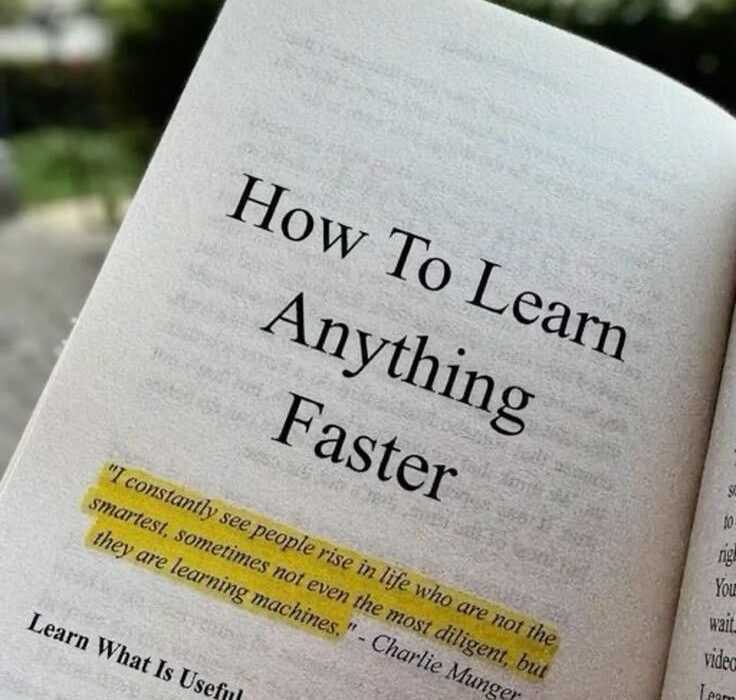In today’s fast-paced world, learning quickly isn’t just an advantage—it’s a necessity. Whether you’re a student preparing for exams, a professional adapting to new skills, or someone simply passionate about self-improvement, the ability to learn faster can save you time, reduce stress, and boost your confidence.
The good news? Fast learning isn’t a talent you’re born with—it’s a skill you can build. With the right strategies, mindset, and techniques, anyone can train their brain to process and retain information more efficiently. In this blog post, we’ll explore 12 powerful ways to learn fast and retain more of what you learn.
1. Understand How You Learn Best
Everyone has a preferred learning style:
- Visual (learn through images and diagrams)
- Auditory (learn through listening)
- Kinesthetic (learn by doing and touching)
- Reading/Writing (learn through reading and note-taking)
Take a moment to identify your style. Once you know how you learn best, tailor your study sessions accordingly. For example, visual learners might benefit from mind maps, while auditory learners may retain more from podcasts or recorded lectures.
2. Use the Feynman Technique
The Feynman Technique is a method created by physicist Richard Feynman. It’s simple yet powerful:
- Choose a concept you want to learn.
- Teach it as if you’re explaining it to a 5-year-old.
- Identify the gaps in your explanation.
- Go back, study those gaps, and simplify again.
By breaking down complex ideas into simple language, you deepen your understanding and remember it better.
3. Break It Down with Chunking
Our brains learn better in small pieces. Instead of trying to memorize a large block of information, break it into chunks. For example:
- Break a 10-page chapter into sections of 2 pages.
- Group numbers, concepts, or vocabulary into meaningful units.
Chunking prevents overload and makes recall easier during exams or presentations.
4. Learn by Teaching
One of the best ways to learn fast is to teach others. When you explain a topic to someone else, your brain works harder to organize, clarify, and retain the information.
Even if you don’t have a study partner, pretend to teach to an imaginary audience—or record yourself and listen back.
5. Use Active Recall
Passive reading is not enough. Instead, use active recall—testing yourself without looking at the material. For example:
- Use flashcards (like Anki).
- After reading, close the book and summarize aloud.
- Ask yourself questions and answer from memory.
The effort of pulling information from your brain strengthens neural connections, making memory stronger.
6. Apply the Spaced Repetition Method
Instead of cramming, space out your learning over days or weeks. This scientifically proven method helps you retain information longer.
Apps like Anki, Quizlet, or Brainscape use spaced repetition to prompt you with reviews just before you’re about to forget something—perfect timing for memory reinforcement.
7. Eliminate Distractions and Use Focus Blocks
Multitasking kills learning speed. Use focused study sessions—like the Pomodoro Technique (25 minutes of focus, 5 minutes break). After 4 rounds, take a longer break.
During those 25 minutes:
- Turn off phone notifications
- Close unnecessary browser tabs
- Work in a quiet, dedicated space
Deep focus boosts comprehension and learning speed significantly.
8. Use Mnemonics and Memory Tricks
Memory tools make information easier to store and retrieve. Try:
- Acronyms (e.g., PEMDAS for order of operations)
- Rhymes or songs
- Storytelling to link facts together
- Loci Method – associating ideas with locations (Memory Palace)
These techniques are especially useful for memorizing lists, formulas, or vocabulary.
9. Make Learning Multisensory
Engage multiple senses to make the brain work harder and remember more. Try combining:
- Reading + Listening (audiobook + text)
- Writing + Speaking (take notes while reading aloud)
- Drawing + Explaining (sketching diagrams while describing them)
Multisensory input strengthens memory formation by creating more associations in the brain.
10. Learn the Most Important Stuff First (Pareto Principle)
Use the 80/20 Rule: 80% of results come from 20% of the material. Identify the most critical concepts and focus your energy there.
Ask:
- What’s most likely to be on the test?
- What concepts are used most often in real life?
- What’s the foundation for other topics?
Learn smart, not hard.
11. Take Regular Breaks and Sleep Well
Your brain consolidates memories while you rest. That means sleeping is a crucial part of learning.
Don’t study for hours without breaks. Instead:
- Take a 5-minute walk or stretch
- Get 7–9 hours of quality sleep
- Avoid studying just before bed—give your brain downtime
Your brain will reward you with clearer thinking and better memory the next day.
12. Stay Curious and Enjoy the Process
Passion fuels progress. When you’re genuinely interested in what you’re learning, you absorb faster.
Here’s how to stay curious:
- Connect the subject to your life or goals
- Challenge yourself with fun quizzes or puzzles
- Join groups or forums with similar interests
The more engaged and emotionally invested you are, the faster and deeper your learning becomes.
Bonus Tip: Learn in Layers
Don’t try to understand everything perfectly in one go. Start with a broad overview, then go deeper in the next round. Layered learning helps you build understanding gradually, without feeling overwhelmed.
Fast learning isn’t magic—it’s a matter of using the right techniques consistently. From active recall and chunking to spaced repetition and teaching others, these strategies train your brain to work more efficiently.
Remember, speed is important—but comprehension is the goal. Focus on mastering the material, not just rushing through it. With patience, practice, and the tools above, you’ll be amazed at how quickly you can learn anything.


Leave feedback about this